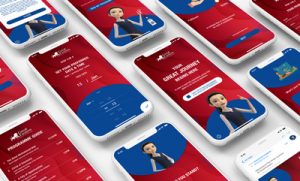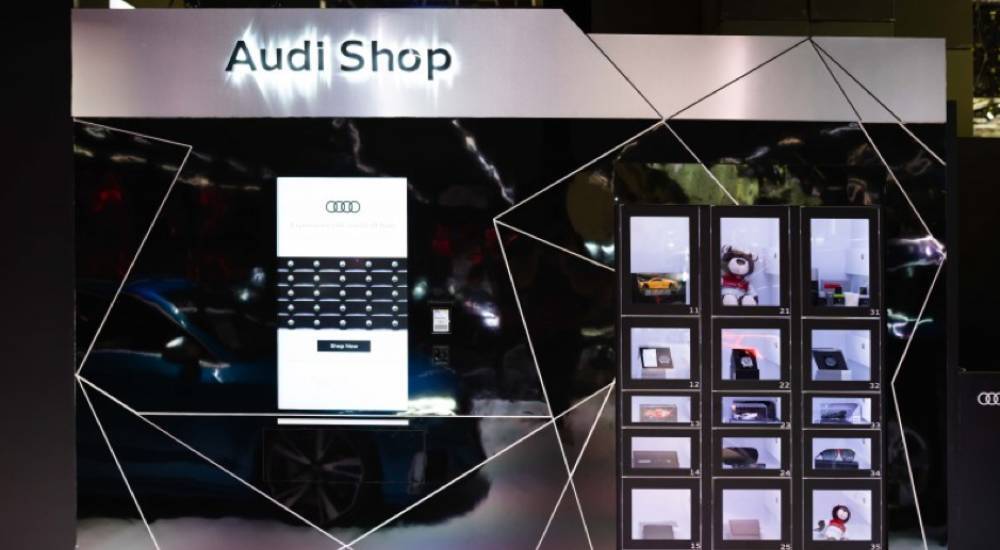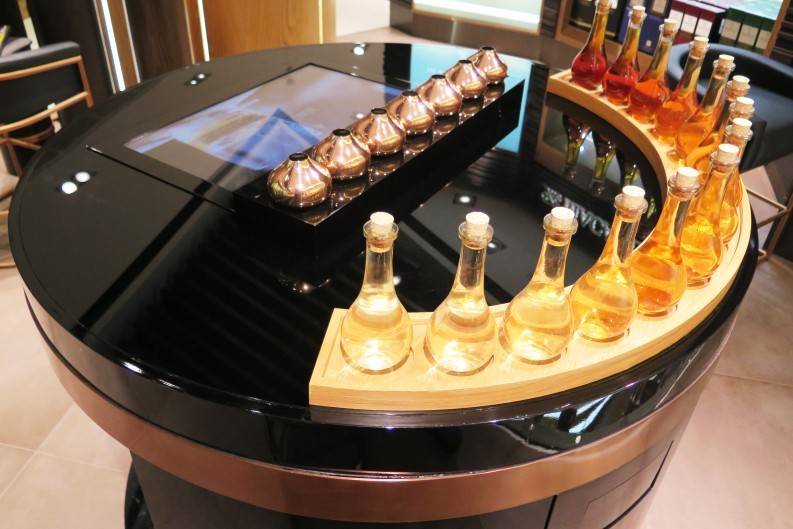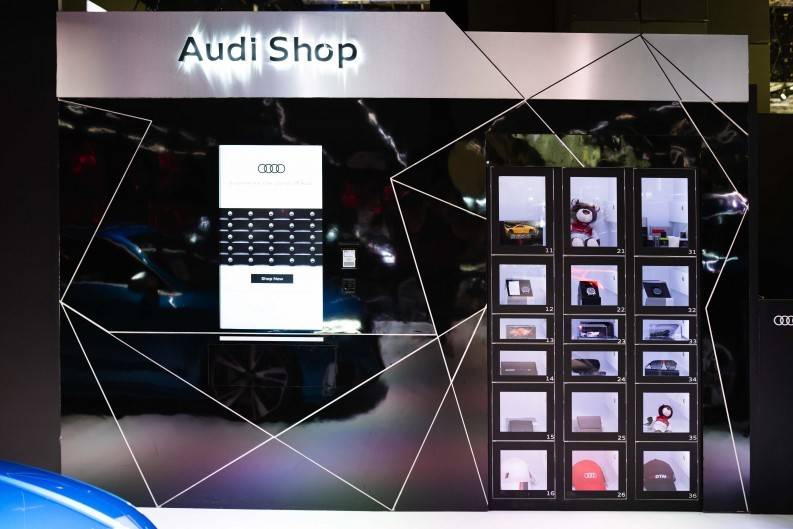Omni-channel marketing is an approach to constructing the consumer experience such that the consumer engages with offline and online touchpoints in a comprehensive and smooth manner. However, this strategy is a relatively new idea and many businesses may be at a lost as to how to begin introducing omni-channel practices.
Founded in 2011, Trinax specialises in designing and developing interactive digital experiences built on an omni-channel framework that enables businesses to conduct meaningful and experiential offline-to-online (O2O) engagements with their customers.
Here are three ways Trinax has assisted brands to adopt omni-channel marketing with its hardware and software products.
1) Personalise Consumer Experience using Data
Consumers generate data as they browse your brand products online. Businesses can upgrade their data collection systems to better capture customer preferences and activities on communication channels – including physical stores. The data collected can be leveraged to gain insights to customers’ purchasing behaviour and provide a customised shopping experience. An omni-channel strategy can also be employed to keep track of the data regarding items shoppers have returned in the past, which will aid in inventory forecasting.
Case Study: Macallan – The Interactive Whisky Experience
Shoppers could interact with the touchscreen to find the ‘perfect’ whisky. This installation combined an offline-to-online engagement with an online-to-offline engagement as shoppers could first seek whisky recommendations on-screen and subsequently purchase one that suits them best in the store. (Photo Credit: Trinax)
Having built an exceptional reputation for its quality single malt whisky, Macallan is the most sought-after whisky for collectors and whisky lovers around the globe. To build further brand awareness and product appreciation, Trinax specially designed a software application to be used within an interactive digital table installed at the brand’s Changi Airport shop front. The application featured bottle-specific information such as spider diagrams, history, technical specifications and a video introduction.
The software also allowed shoppers to select two ingredients from a list of ingredients used in making Macallan’s whisky. With their inputs, the software application would then generate the most suitable Macallan whisky for the shoppers’ palates.
The interactive digital table was a great attraction for shoppers at the duty-free shop, who enjoyed the whisky customisation using their favourite ingredients. Ultimately, shoppers could develop a deeper appreciation for Macallan’s products as well as positive associations with the brand through this unique experience.
2) Appear Omnipresent
While it is good to target specific channels where people discover new brands and content, we live in an era when screens are everywhere. This means that marketing on separate digital platforms may be costly and ineffective in developing a solid brand presence.
One way to counter this and ease into omni-channel marketing, is to construct an illusion of omnipresence to increase the visibility of your brand. Instead of treating marketing channels as silos, brands should understand where these channels overlap and where your brand’s target audience is paying attentionーbe it a blog, YouTube channel, TV show, film, forum or brand website. The key to reaching the most people possible is to strategically insert your brand at the intersections of these media properties. By remaining in the peripheral vision of your consumers on channels they already trust, you can gain greater credibility for your brand.
Case Study: American Insurance Association (AIA) Malaysia – Celebrating Ramadan
Users of the interactive food dispenser could record a 3-second video message, which would be uploaded onto a microsite. (Photo Credit: Trinax)
AIA is a well-established company that provides insurance products for both individuals and businesses.To give back to the Muslim community in Malaysia during Ramadan, the brand launched a social campaign using omni-channel marketing.
The Trinax team designed and built an interactive food dispenser, where users were asked to record a 3-second video message to share what they are grateful for in their life. For every video message recorded, a box of food would be dispensed for the participant to consume after fasting hours. The video would be uploaded to a microsite, and for every video uploaded, AIA donated RM10 to an orphanage.
AIA’s strategy effectively integrated multiple channels and generated a lot of online publicity. The brand successfully increased their online presence as participants constantly shared their videos on the microsite with family and friends. AIA’s partnership with an orphanage also reinforced its position as a trusted and reliable insurer with a strong sense of corporate social responsibility. All in all, the campaign pulled on the heartstrings of people and created a feel-good factor while enhancing brand awareness for the company.
3) Manage and Optimise Shopping Processes
There are two ways in which an omni-channel strategy can help your brand enhance customers’ shopping experience. By bridging online-to-offline commerce or vice versa, queue times decrease while product availability and customer service improve.
First, customers can browse products online. The site will subsequently direct them to the actual storefront carrying a particular item, especially if it is not in stock on the brand’s website. Customers then have the chance to try the item in-store before placing orders. This gives visitors to your brand’s webpage more time and breathing room to build trust with your brand so that an attempt to retarget them at the physical retail outlet is more likely to yield positive results.
Alternatively, the process can be flipped around such that if customers find something they like in the store, they can order it online and have it delivered later rather than having to queue to get it immediately.
Case Study: Audi Shop
Shoppers could use their time effectively in Audi Singapore’s showrooms and enjoy fuss-free shopping with Trinax’s Audi Shop. This interactive vending machine let shoppers browse Audi products on the touchscreen and select their purchases before dispensing them in the drawer at the shoppers’ waist level. (Photo Credit: Trinax)
Audi is a German automobile manufacturer with its own line of luxury vehicles and its showrooms in Singapore regularly see potential car buyers checking out the latest models. To improve consumer engagement in Audi Singapore’s showrooms, Trinax came up with an interactive vending machine (Audi Shop) selling car accessories. The Audi Shop aimed to appeal to both new car owners looking to find the ideal car accessory to complement their new car and existing car owners who are not ready to purchase a new car yet, but would not mind adding one of Audi’s intriguing car accessories to their collection.
Shoppers could receive real-time product information by interacting with the touchscreen on the vending machine. Should the shoppers find something that catches their interest, they would be able to pay for the product on the spot using cashless payment, rendering long snaking lines at the checkout counter a thing of the past. Items would be collected from a drawer which extends from the vending machine at the shoppers’ waist level.
The Audi Shop connected shoppers from a physical retail space to an online shopping experience and simultaneously automated the retail process. The user-friendly interface of the vending machine and instant gratification that consumers could feel when obtaining the products all contributed to a memorable brand experience for Audi’s valued customers.
Go Omni
A Forrester Research report found that 90% of ecommerce leaders list the integration of mobile technology to create innovative digital shopping experiences as their top priority. As more businesses recognise the essential role omni-channel marketing plays in revitalising consumer experience, it becomes crucial that brands understand the concept. Hopefully, these examples have helped you to better perceive its benefits and implications on your current systems. Going omni is the way forward if you wish to engage more closely with your target audience in this increasingly competitive marketing world.









